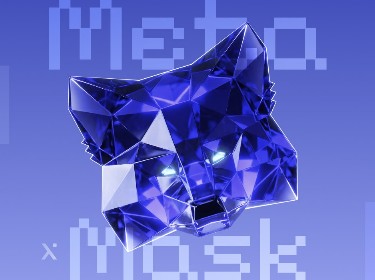Mr Zuckerberg renamed Facebook to Meta back in 2021. JP Morgan opened a Virtual Lounge in Decentraland in 2022. Now, in 2025, you’re still considering if this is the right moment to go to the metaverse. Is it worth it? Dive in to learn the facts.
JP Morgan was the first bank to move to the metaverse. In the report dedicated to the opportunities in the metaverse, they predicted $1 trillion of yearly revenues for the sectors that would have the courage to follow them. So, we assume JP Morgan has considered the issue thoroughly.
Metaverse can be described as a network of 3D virtual worlds where people communicate, play games, buy and sell digital assets, and do practically anything that they enjoy doing in the real world. While the metaverse has not yet reached the full immersive and advanced level depicted in The Matrix, it is already driving transformative changes across various domains, including banking.
PixelPlex has been a pioneer in blockchain, Web3, AI, and data science since these technologies first emerged. Therefore, we have asked our experts to share their ideas about current trends in banking in the metaverse. In this overview, you will find the advantages, challenges, and requirements of implementing the metaverse for banking services.
The growing metaverse in the banking market
![]()
Banks and other financial institutions try to attract customers when they are young. If they manage to grab the attention of potential customers and prove their reliability, customers are unlikely to quit and change banks. That’s why banks have always been interested in the latest trends and financial software development services as they try to implement the newest technologies to appeal to younger generations. Zoomers were born with technology at their fingertips. Therefore, the metaverse, with its digital environment that offers every imaginable service online, is an opportunity for the banks to address young audiences. According to CoinLaw, 70 million active users participated in financial transactions on metaverse platforms in the first quarter of 2025.
The evolution of the banking industry has come a long way, with the following milestones in its development:
- Traditional banking with one-on-one interactions with bank clerks: All the documents were kept on paper, lots of manual work was expected from the staff, and there was no personalized approach to customers.
- Internet banking: Customers received an opportunity to access banks online via smartphones and desktop computers.
- Open banking: Banks have become connected to third-party financial services via APIs. For example, customers may choose better services, ways to improve loan terms, or specific features, like budgeting.
- Digital finance banking: With the appearance of the Web3 development services, banks managed to offer their clients fast and secure transactions. New digital assets like cryptocurrencies and NFTs have allowed banks to deal with new domains, such as art, real estate, or gaming.
- Metaverse financial services: Finally, metaverse development has brought new opportunities for banks, such as virtual events, remote collaborations, digital twins, etc.
Have an idea of a metaverse platform? Our experts will create the architecture, assist with choosing a relevant blockchain, and map third-party integrations for a metaverse of any complexity. Check out the UFORIKA case
Core technologies powering banking in the metaverse
![]()
Blockchain and DeFi integration
Blockchain provides organizations with secure and transparent transactions. The information about the transactions is kept in immutable ledgers. Only authorized parties can access it. Therefore, the whole system is protected against fraud.
With metaverse platforms, users purchase virtual items, such as Nike sneakers or Gucci clothing, for their avatars and digital homes. They also earn money through online play-to-earn games like Axie Infinity and the Meta Cricket League. Those games typically involve cryptocurrencies and unique digital assets like NFTs. Converting this virtual currency into real-world money requires exchanging it for fiat currencies, which are deposited into bank accounts.
AI and machine learning
Artificial intelligence has penetrated all the domains of modern life, so it’s no surprise that it also enhances fintech software. AI development services offer smart loan risk prediction, fraud detection, personalized financial advice, and customer service automation. AI powers 24/7 digital human assistants or chatbots in the metaverse. They are capable of multilingual support and real-time interaction by connecting with backend banking systems through hyperautomation. The models underneath these chatbots are trained on proprietary high-quality data with relevant security protocols.
ML also assists in predictive analytics. For example, algorithms examine financial history and potential borrowers’ spending habits, and other social and economic parameters to make an unbiased decision regarding granting a loan.
Cloud-native platform adoption
Financial services move to the cloud fintech platforms for scalability, agility, and secure data processing. Cloud solutions allow for elasticity without additional costs for physical infrastructure. Besides, with cloud platforms, financial enterprises shorten the time to market for new applications and adapt faster to changing market trends. Pay-as-you-go approaches are cost-efficient for banks and companies.
AR/VR
Augmented and virtual reality provide immersive 3D experiences for customers and employees. These technologies enable virtual branches, interactive financial sessions, and visualize digital assets or even digital twins of physical assets (e.g., virtual real estate or bank branches) for underwriting or engagement purposes.
This is the process of automating every operation in the organization. Gartner defines hyperautomation as the “orchestrated use of multiple technologies, tools, or platforms,” including AI, ML, event-driven software architecture, robotic process automation (RPA), business process management (BPM), integration platform as a service (iPaaS), low-code/no-code tools, and other tools. Hyperautomation integrates customer experiences in the metaverse with core banking systems and operational infrastructure.
Advantages of the metaverse in banking
![]()
Engaging customers
Technologies like AI and AR/VR allow banks to attract customers to interactions and increase their satisfaction with the services and the quality of products. 24/7 personalized AI-driven virtual assistants are unlikely to be busy or rude with customers. Interactive VR/AR interfaces for banking transactions and consultations are pleasant to use and save commute time. Virtual lobbies are accessible anytime and anywhere and provide an opportunity to play or educate oneself on financial aspects. Besides that, ML algorithms that assess chances for borrowing a loan are unbiased and ground their decisions on large volumes of data.
Training and educating
Besides customer engagement, VR simulations help with employee onboarding. The staff examines various educational materials and trains in virtual environments. The Bank of America was the first to launch a VR training program in 4,300 financial centers. Employees of the bank use VR headsets to access 20 different VR simulations covering a variety of skills such as building stronger client relationships, managing challenging conversations, and responding with empathy.
The VR training includes real-time data tracking that helps managers spot skill gaps and offer targeted coaching and personalized support to improve employee performance. After a pilot with 400 staff, 97% of participants reported feeling more confident in their job tasks following the VR sessions.
Building trust
Blockchain platforms allow for fast, transparent, and secure operations, which are essential for the banking industry. Banks use smart contracts for automation and advanced biometric plus VR-based authentication to protect users and data. This ensures safer operations in the metaverse finance ecosystem. Hyperautomation provides customers with a chance to receive all the services they require at once and save the working hours of employees. For example, you can apply for a loan, verify your identity, and receive a personalized financial consultation during the same virtual visit. The COIN AI platform of JP Morgan saves them 360,000 hours through automating paperwork.
New financial products
Operating in the metaverse is like creating a new world. The sky is the limit for imagination there. Financial institutions can think of new products and solutions that will bring them satisfied customers. Digital wallets, NFTs, and cryptocurrencies are essential products in the metaverse. But we may go further and include virtual real estate financing or digital twins for real estate tours and loan underwriting in the virtual services portfolio. For example, instead of looking at images of a new house, you will have an opportunity to virtually walk around the rooms and imagine your family living in that place. In addition to this experience, you will also save time and costs required to physically attend the dwelling.
Business growth
Banks and financial institutions may reach remote areas through the metaverse and make their services accessible to everyone. Besides, the metaverse plays an important role in educating the population via virtual courses on financial literacy. It creates communities and stimulates collaboration among users. Virtual banking hubs and events also contribute to deeper customer connections. All those activities bring businesses new revenue streams and, at the same time, build brand awareness.
AI Chatbots in Banking
How to Apply Machine Learning in Banking
Big Data Analytics in Banking
Metaverse in banking use cases
Some famous banks and financial organizations have already implemented metaverse technologies to transform their services:
| Name | Metaverse technology used | Results and impact |
| JPMorgan Chase | Virtual Onyx Lounge in Decentraland | First global bank in metaverse; $1 trillion market opportunity projected; focus on virtual real estate ownership and gaming |
| Union Bank of India | Uni-Verse platform with AI advisors | Over 76,000 new customer leads in 18 months; accelerated product launches |
| Mastercard & Immersve | Web3 payment protocols integrating crypto wallets | Secure crypto purchases in metaverse; USDC-to-fiat currency conversions |
| HSBC | Virtual land in the Sandbox for engaging e-sports and virtual gaming fans | Closing around 69 physical branches as customers move online; interactive VR-based bill payments and account management |
| KB Kookmin Bank | VR-based access to virtual financial advisors | Enhanced personalized advisory services; improved engagement for tech-savvy users |
In summary, while many banks have just begun exploring the potential of banking in the metaverse, these efforts represent only initial steps. Companies like Nvidia, Roblox, and Microsoft focus on technologies that would allow them to interact with virtual worlds. For example, Epic offers a game platform and the Unreal Editor that allows users to create their own interactive virtual experiences. The banking sector, along with entertainment, education, sports, and other industries, is actively exploring the metaverse, both benefiting from its opportunities and contributing to its growth and richness.
An NFT marketplace might be part of a metaverse where users will be able to trade and mine assets and share experiences. Learn how it works on the NFT platform for opal gemstone enthusiasts developed by PixelPlex
Challenges and considerations
![]()
Data privacy and security
Metaverse is the virtual copy of the real world, so the risks are similar. Banks may face various reputation and legal risks. The exact nature or scale of these risks might be, for example, the negative effects of social platforms, such as the spread of false information, money laundering, and fraud related to NFTs and cryptocurrencies, as well as disclosing personal customer data in virtual spaces.
Solution: Software developers should implement advanced encryption technologies like AES 256-bit and secure communication protocols (TLS/SSL) to protect data in transit and at rest. Using strong authentication mechanisms (multi-factor authentication and biometric verification) also protects sensitive financial data. Educating users about secure practices and privacy settings is no less important.
Blockchain scalability
Blockchain scalability remains one of the major challenges for metaverse banking, as several critical components need to be developed and expanded to support a seamless meta-economy. These include integrating virtual worlds with traditional financial payment systems such as credit cards and bank transfers, as well as connecting Web2 virtual environments with crypto payments and NFT marketplaces. The so-called “scalability trilemma” of the need to balance speed, security, and decentralization remains tough, alongside the necessity to align the operation of multiple blockchains and off-chain systems.
Solution: Layer 2 solutions, sharding, and improved consensus methods are promising possible solutions. Also, cloud-native architectures and role-based access control policies help to manage scalability issues. But there is still no perfect solution as the technology is still developing.
Regulatory compliance complexities
When it comes to regulations for the metaverse, many important questions remain unanswered. These include how to establish clear guidelines for tax, accounting, and legal treatment of digital real estate and virtual commerce related to Web3. There’s also the challenge of managing regulatory and financial rules for Web2 virtual worlds that incorporate Web3 digital assets. Another issue is how to provide services and solutions for virtual worlds that are accessible globally but must still comply with local legal and commercial rules. Additionally, the development and role of community governance in the metaverse raises questions like: who creates and enforces the rules in these virtual spaces?
Solution: The legal framework for the metaverse is still forming, and addressing these issues is key to its future growth and stability. The key ideas might be to develop comprehensive governance frameworks incorporating KYC, AML, and data protection requirements tailored for decentralized and tokenized assets. Besides, it is important to engage proactively with regulators to align metaverse financial services with evolving legal standards and jurisdictional variances.
Ethical use of AI/ML
AI algorithms tend to generate biased or misleading information. It might result in reputational losses in the metaverse, just like in reality. Privacy concerns also rise as AI collects and analyzes large amounts of personal and financial data. Moreover, the complexity of AI decision-making makes it difficult to fully understand and explain why certain outcomes occur, posing challenges for regulators and customers seeking clarity.
Solution: Data scientists train AI models on diverse and representative datasets to minimize bias in credit scoring, loan approvals, and customer profiling. Besides, the output should be continuously checked for fairness. The human-in-the-loop approach must be used to complement automated decisions and maintain ethical standards.
Key Basel III Requirements for Banks and Crypto Assets
Post-Quantum Cryptography
Conclusion
Metaverse creates a possibility to engage in any activity, be it learning, entertainment, working, or socializing, online. It is convenient, affordable, and many people enjoy it even more than real-world experiences. That indicates wide development opportunities for banking and other industries in the metaverse.
Online banking solutions are compliant and secure, and they scale easily in accordance with the audience’s demands. Metaverse fintech possibilities allow companies to differentiate their products and solutions and offer customers new experiences with virtual branches, tokenized asset management platforms, NFTs as collateral, etc.
Metaverse requires building new collaborative ecosystems involving banks, fintech startups, and technology providers. Together, they create metaverse financial products and build online communities. PixelPlex is ready to apply its expertise and experience with blockchain, AI, and Web3 development to building metaverse platforms for any target audience. Contact us and we will discuss your project and objectives.
FAQ
We assume the development of the metaverse will continue. People will be more involved in the virtual spaces and activities, which will bring them a feeling of community and collaboration. Metaverse will allow for wider accessibility of banking services and a more personalized approach to customer interactions. Therefore, banks will form long-lasting relations with their customers, maintaining trust and contributing to the formation of relevant values.
The payment possibilities in the mateverse depend on blockchain technology that supports digital assets like cryptocurrencies and NFTs. Therefore, blockchain is an obligatory technology for the metaverse for banking. It opens interesting payment options. For example, users could find digital ATMs in the metaverse connected to their real bank accounts. They would use their usual banking PINs to withdraw real money and put it into digital wallets. As more people understand and use these digital assets, banks will see growing demand to protect them. Banks without a plan for securely storing digital assets risk falling behind.
First of all, banks need a robust core banking API. The metaverse acts as an additional channel for customer interaction. It complements the existing ecosystem, from mobile and desktop applications to physical branches and call centers. To enable this integration, banks require a processing platform API. Second, banks must identify how to set themselves apart. They should make sure their metaverse transactions maintain the same reliability and validity as those conducted in the physical world. Third, banks need significant resources to modernize their legacy systems and update marketing approaches and business models.
A McKinsey report shows that 40% of metaverse users play games in the digital world. More popular interests include virtual shopping, telehealth, attending a learning course, or attending a music show. It means users of the metaverse are not only gaming aficionados, but also those interested in socializing, travelling, and other forms of entertainment. Therefore, banks have a wide potential audience in the metaverse just as in the real world.
Banks and other financial enterprises will continue to hire UX/UI designers, cloud architects, and software engineers. Besides those employees, they will also job hunt 3D modelers, game developers, platform specialists, and blockchain professionals. It’s important for banks to begin building this talent pool now. Partnering with software companies like PixelPlex saves significant time, as all the required specialists are already working in a tight-knit team.




